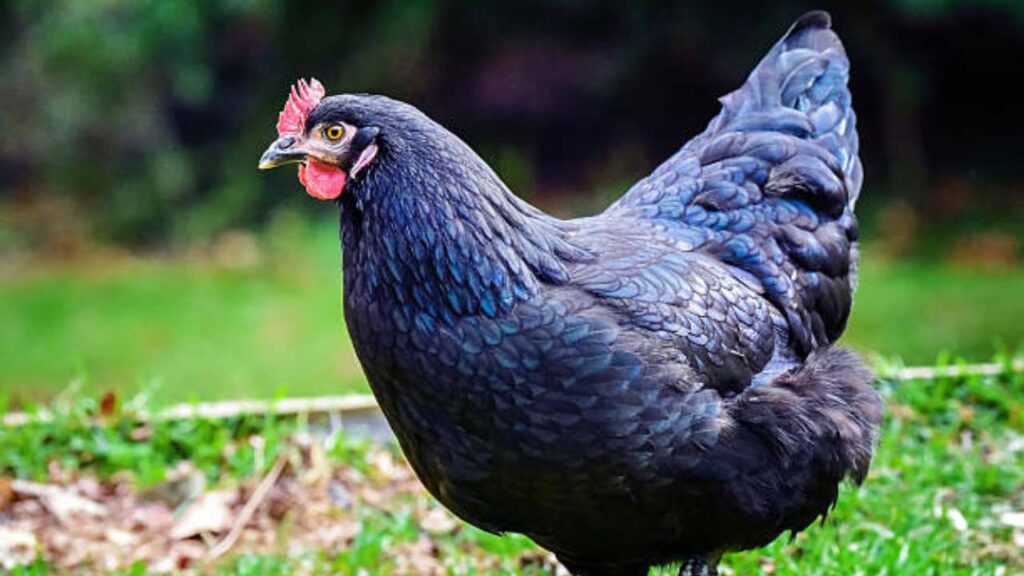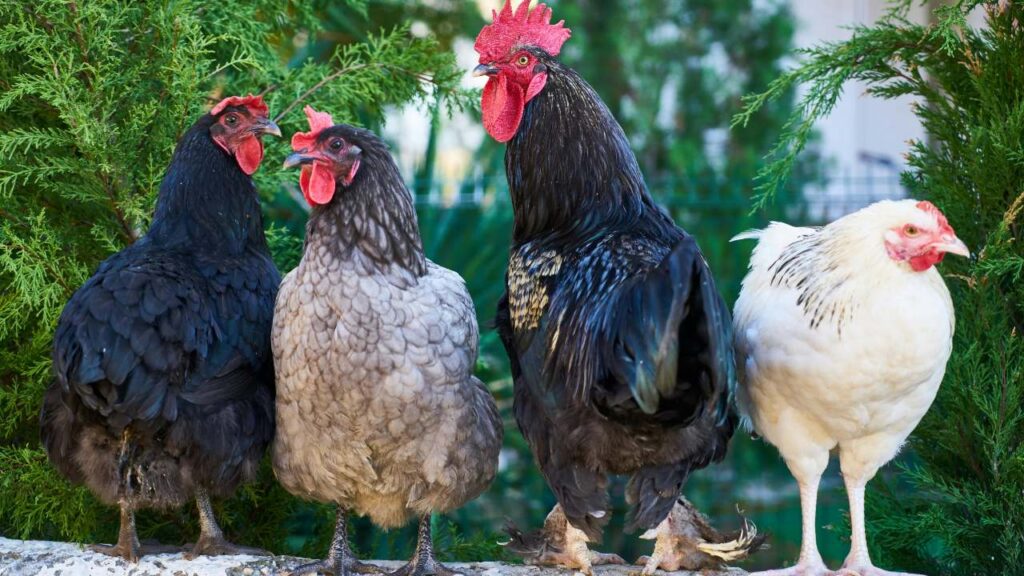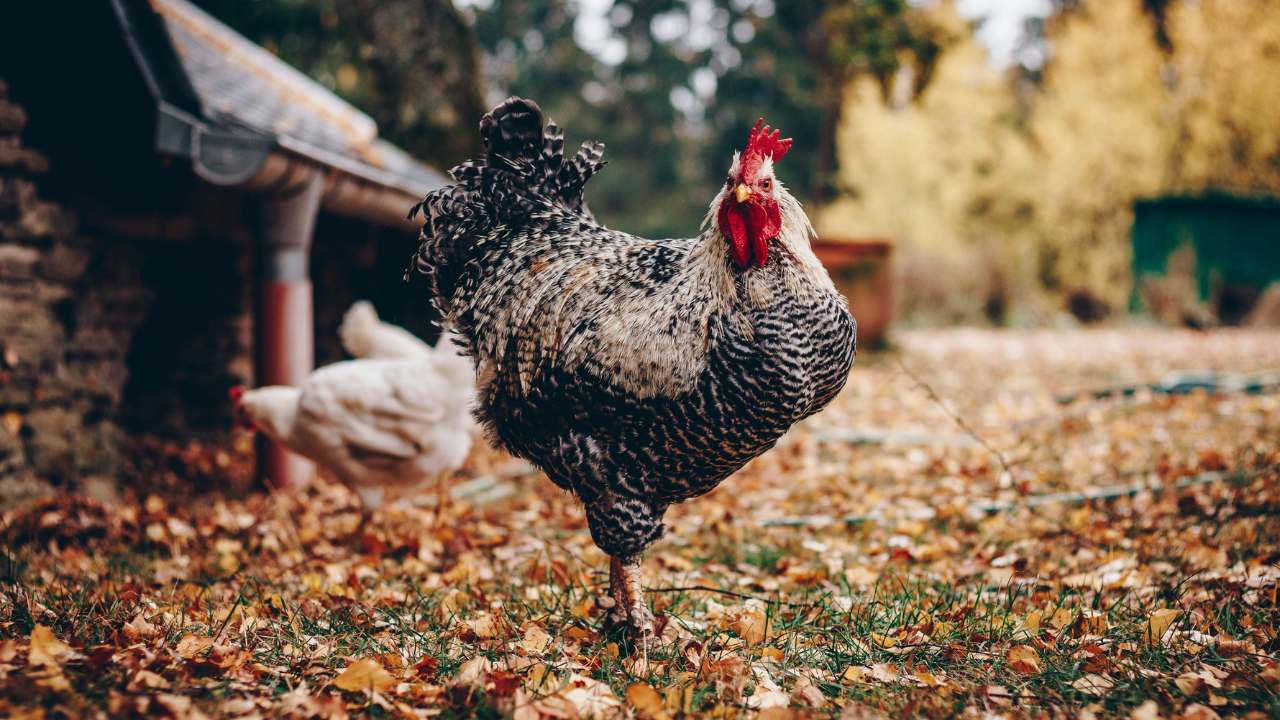Chicken is a common supper food, but occasionally you want something new, something special. Here comes Blue Star Chicken. It’s not a showy brand name or a new breed; it’s actually a rather interesting word that is becoming more popular among those who care about the environment and poultry fans. Think of it as a way to show that the chicken was reared with a lot of care, generally because it meets certain welfare requirements or uses environmentally friendly methods that make it stand out like a blue star in the night sky. This article goes into great detail on Blue Star Chicken, looking at what makes it special, why it matters, and how you might enjoy it.

Blue Star Chicken Explained
What then is Blue Star Chicken? Stop picturing a specific breed such as a Rhode Island Red. Rather imagine it as an excellent standard of chicken farming. The farmers that strive to achieve this level of a blue star are concentrated on the welfare of the birds throughout the processing. This typically implies a lot of space afforded per bird as compared to conventional farms space to roam, spread wings and be themselves. They have the best feed which is usually antibiotics- and growth promoter-free, trending towards non-GMO or organic. The availability of clean water, natural light-cycles, and low stress environments are non-negotiable issues. The blue star concept represents striving to hit that high ground of ethical, sustainable poultry production to arrive at a healthier, happier bird and, in the end, a better product on your table.
Blue Star Chicken Perks
There are very tangible benefits to picking Blue Star Chicken, besides the clear conscience. First of all, the difference in taste and texture is easily felt. The slower, more natural growth rate permitted by ethical practices yield firmer and tastier meat that has ample moisture retention through cooking. It nutritionally usually delivers a better punch. Pasture raised/ethically managed birds such as Blue Star, may contain more beneficial omega-3 fatty acids and other vitamins such as A and E as well as being lower in saturated fat than conventionally raised birds. You are also proving farmers willing to practice regenerative methods to better the health of soils and biodiversity. Moreover, avoiding using the regular antibiotics will contribute to countering the important global problem of antibiotic-resistant bacteria. It is a decision that works in your favor with respect to health, animal welfare and the globe.
Cooking Star Blue Poultry
There is no trick in keeping the best about your Star Blue Poultry (a synonym that hints at the high level of its quality). Since the meat can tend toward denser and more flavorful, this works very well when light preparations are made to bring out their natural flavor. Avoid overcooking! Whole or parts of birds roasted with simple herbs, chopped garlic, lemon and fine olive oil make succulent and juicy results. Roasting breasts or thighs in a pan caramelizes to the tasty taste. When legs and thighs are braised in a tasty broth or sauce they come out wonderfully tender.
The thighs are exponentially more forgiving and are a bit fattier. It should be remembered that quality chicken such as this tends to have less water retention than factory-farmed chickens may have, which could mean that it cooks just a little bit quicker than standard chicken. Wait 5-10 minutes after cooking and then carve.
This will keep those juices where they belong Industrial meat thermometer (165F/74C internal temp is safe), or digital won’t melt. Savor the chicken flavor being clean and pure!
Health Gains Guaranteed
There are some important impacts that eating Blue Star Chicken has on your well-being. There is a direct relationship between the better diet of these birds with an active form of lifestyle and the nutritional content of the meat. You tend to receive more of the necessary substances that provide muscular tissue, B-vitamins that are imperative in energy production, and minerals such as zinc and selenium, which are essential to immune systems. The focus on pasture access or high-welfare systems frequently increases concentrations of anti-inflammatory omega-3 fatty acids and antioxidants such as vitamin E.
More importantly, by selecting poultry that is not treated with the widespread use of antibiotics, you personally minimize your non-direct exposure to the use of such drugs, an important step in the long-term health of both yourself and society at large. Less stress among the birds also translate into less physiological stress hormones in the meat. It is nutrient-dense food that provides a healthy body.

Poultry Farming Future
The emergence of such ideas as the name of Blue Star Chicken is a promising change of the direction of poultry production. Consumers are getting choosy, they want more transparency, higher welfare, and true sustainability. This challenges the whole industry including big manufacturers to change ways of operation. Technology supports this move, and it is now easier to monitor animal health conditions and environmental impact. Small markets that demand ethically raised poultry are on an increasing trend. A more diverse landscape is expected to follow in the future, with big producers making changes to their welfare standards, success of smaller farms offering true Blue Star quality.
It is important to continue to innovate the efficiency of the feed and management of wastes and renewable energies in farms. Finally, the Blue Star ideal, which is concerned with animal welfare, environmental well-being and top-quality should serve as a powerful paradigm of how to create a stronger and more sustainable food system in the better future.
Blue Star Chicken vs. Conventional Chicken
| Feature | Blue Star Chicken | Conventional Chicken | Why You Feel It |
| Living Space | Plenty of room! Pasture access or spacious barns. Birds can roam, flap, forage naturally. 🌿 | Often crowded indoor sheds. Little space to move or express natural behaviors. 🏭 | Peace of Mind: You know animals lived well. |
| Daily Diet | Top-quality feed (often Non-GMO/Organic). No routine antibiotics. Focus on natural health. 🥬 | Standard feed, often with growth promoters. Routine antibiotics common. 💊 | Better for You: Cleaner meat, less antibiotic residue, potential for more nutrients. |
| Bird Stress | Low-stress life! Calm handling, natural light cycles, room to breathe. Low stocking density. 😌 | High stress is common. Overcrowding, fast growth, artificial environments. 😰 | Better Taste & Texture: Less stress = more tender, flavorful, juicy meat. |
| Planet Impact | Sustainable focus! Rotational grazing, manure composted, protects soil/water, supports biodiversity. 🌎 | Large-scale waste issues, higher pollution risk, relies on transported feed. 🏭 | Feel-Good Choice: Supports farming that heals the earth, not harms it. |
Conclusion
Blue Star Chicken does not simply refer to a bird, but it is an assurance of a better poultry rearing. It embodies great principles of animal health, sustainability, and production of a chicken that is tastier and healthier. It is all respectfully done whether in the broad, low-stress living spaces, the careful feeding and the humane processing. In consuming Blue Star Chicken, the consumer will receive great, nutritious food and will make a direct impact in increasing the success of farmers dedicated to sustainable food and sustainable cultures. It is a choice that can make you healthier, improve the lives of animals and the environment and place food on a healthier, sustainable track. Find these farmers and brands guided by these principles and you will never regret it on both your plate and the planet.
FAQ’s
1. What exactly is Blue Star Chicken?
It is not a breed, rather, it covers the chicken that has been raised to very high standards. Imagine lots of space, high quality food (usually antibiotic free/nongmo), natural light, low stress, and an animal welfare emphasis and sustainability.
2. Why choose Blue Star Chicken over regular chicken?
You get tastier, more flavorful meat, possible health benefits (like more omega-3’s) and you contribute to healthier animals, farmers being more eco-friendly and less antibiotics being used.
3. How can I find Blue Star Chicken?
Do not look only at the wording organic or free-range. Ask to see the label at markets– or find labels that specifically mention high welfare standards, pasture-raised, transparency, and sustainability. Question the farmers on what they are doing!
4. Does Blue Star Chicken taste different?
Yes! Thanks to slower growth — and less stress — the meat is typically denser, more flavorful and juicier. It cooks nicely using straightforward procedures (roasting, grilling, browning) and it also has a cleaner, more powerful profile.
5. Is Blue Star Chicken better for the planet?
Generally, yes. Farms specialized in this standard employ methods such as rotational grazing (enriching soil), manure management, sourcing of locally produced feed, and lower animal population density, which lowers the risk of contaminating the near environment, reduces contaminated emissions and enhances biodiversity as compared to large industrial farms.
